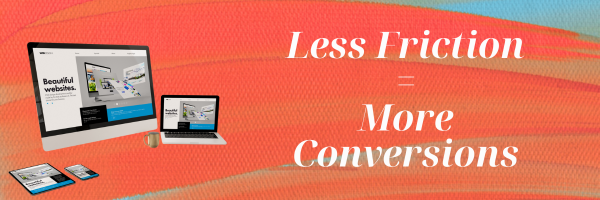3 Things For November 3rd, 2025
What does AI know about your business?

The New SEO: How to Get Found When AI Does the Searching
A hot topic right now for small businesses is getting found via Chat GPT and other AI platforms. For over a decade it was all about SEO and Google search and now it’s all about AI. It’s always been about being a brand that people recommend. And, a real-life recommendation from a trusted friend is still the best and will always be the best.
But how does that translate into being found online? I’ve always believed that your online representation should be an accurate reflection of who you are offline. But of course, I will admit this does take a bit of effort.
I know for the Gen X and Baby Boomer generations it’s annoying to hear that if it didn’t happen on Instagram did it really happen? Yes, you can keep your personal life offline, but your business needs its mirror image online. This isn’t news, it’s been like this for awhile but with AI and the aging of millennials and Gen Z it’s even more important.
AI is pulling from all kinds of different sources. The more places you can be found, the better. The more places you have reviews, the better. If people are talking about you on Reddit, even better.
Make it easier for people to talk about you online by being easily found and tagged. Can they easily find you and share a link to your website? Do you have social profiles that they can tag in recommendations or posts?
On your website, create better content with depth and clarity. Invest in SEO. Fifty percent of AI citations come from the top of Google results. Use Q & A formats, lists, and clear headings. Add credible stats and sources to boost trust. Publish YouTube videos. Use AI to record yourself answering important customer questions and then ask it to create a web page or blog using the information. Make sure it’s conversational and real.
If the content exists in the digital world AI can reference it. The more conversational and human it is the better. The bottom line? Being discoverable isn’t just about ranking anymore—it’s about being worth recommending. Show up in more places, make your content conversational and helpful, and make it ridiculously easy for both people and AI to talk about you. Because when someone asks ChatGPT for a recommendation, you want your business to be the one that comes up.
Start with one thing this week: answer a common customer question on your website in a clear, natural way. That’s content AI can work with—and more importantly, content your customers will actually find useful.
Fun Fact: The headline and bolded conclusion was written by AI. The italics is all me. Claude AI did a good job. I did okay.

Holiday Marketing Done Right: Less Frenzy, More Strategy
Here’s the thing: holiday marketing absolutely works. Our brains are wired to respond to seasonal cues—the sight of twinkling lights, the scent of cinnamon, the promise of celebration during dark, cold months. Marketers who ignore this sensory goldmine are leaving opportunity on the table.
But—and this is crucial—the holidays shouldn’t consume your biggest marketing efforts or budget.
The Holiday Paradox
Yes, holiday marketing works. People are emotionally receptive, nostalgically inclined, and ready to engage. However, this is precisely when every competitor floods the same channels with similar messaging. The result? Saturated audiences and your carefully crafted message competing with hundreds of others for attention.
Rather than pouring resources into competing during peak noise, use the holidays as a touchpoint—a moment to stay visible with strategic presence. Your goal isn’t to outshout the competition; it’s to remain memorable when the frenzy subsides.
Stand Out with Substance
Audiences are exhausted by relentless discount messaging. They’re craving something refreshing: humor, authenticity, content that makes them feel good rather than pressured. Give them that. Share stories, create uplifting social media moments, send email campaigns that entertain rather than just sell.
This is especially critical for service-oriented businesses. You’re not selling products on shelves—you’re selling expertise, relationships, and outcomes. Share behind-the-scenes moments, client success stories, and reflect on the year’s successes. Make people feel good about engaging with your brand.
Use This Time to Reflect and Plan
The holidays offer a natural checkpoint. While maintaining your seasonal presence through social media posts, email campaigns, blog content, and website updates, dedicate equal energy to evaluation. What marketing efforts resonated this year? Which channels drove meaningful engagement? What fell flat and needs retooling?
Use these insights to build your strategy for the coming year. Identify gaps, test new approaches, and prioritize initiatives that will drive long-term growth—not just temporary holiday bumps.
The Real Strategy
Effective holiday marketing should be about celebrating this year’s success and setting the stage for next year by creating warm and memorable touchpoints that keep your brand top-of-mind.
Build relationships now that will pay dividends throughout the year. Because while everyone else recovers from the holiday marketing frenzy, you’ll be positioned to capture attention, loyalty, and revenue when the competition has gone quiet.

Kate Miner
(253) 219-2211
kate@strategy3degrees.com

Reducing Friction Builds Trust Faster
You can explain everything perfectly and still lose people halfway through. The problem isn’t always confusion. When a site makes visitors pause, wait, or second-guess a button, momentum dies. That resistance is friction. It’s what turns curiosity into fatigue before anyone realizes why they left.
Friction doesn’t usually scream. It whispers through small delays, awkward layouts, and forms that ask for just a little too much. Clarity answers what to do. Ease decides if people will do it.
The Effort Barrier
Every extra click or question creates another decision point and every decision point is an exit ramp. People rarely say, “This form is too long.” They just quit. Reducing friction isn’t about stripping everything down; it’s about sequencing trust. Ask for only what’s needed to start the conversation, and build from there once value is proven. Let the first step feel easy. The faster someone experiences a win, the more likely they’ll stick around for the next one.
The Navigation Drift
Clarity means little without flow to back it up. When users have to hunt for what’s next, their confidence slips. Many sites try to do too much at once: “Learn More,” “Get Started,” “Contact Us,” “See Pricing.” When everything has equal weight, nothing guides the eye. Every page should serve one purpose and point to one clear next step. Buttons and links aren’t just directions—they’re narrative cues saying, “You’re in the right place; here’s what happens next.”
The Emotional Lag
A process that feels cold or robotic slows people down just as much as a broken link. Tone and timing matter: confirmation messages, follow-ups, and thank-yous shape how users feel after they click. A small reassurance like “We’ll get back to you within one business day” or even a simple “Thanks for reaching out” can carry more weight than a sleek form ever could. Reducing friction is as much about emotional continuity as it is about pixels and speed.
The Real Goal: Flow
Friction hides in hesitation, In those half-seconds where people stop to think, “Wait… what happens next?” Your job isn’t to strip away personality or content. It’s to make each step feel natural and human. When your site moves with your audience instead of against them, clarity turns into confidence and confidence turns into conversion. Transparency earns trust. Ease keeps it.

Scott Fultz
(253) 503-0328
scott@strategy3degrees.com

